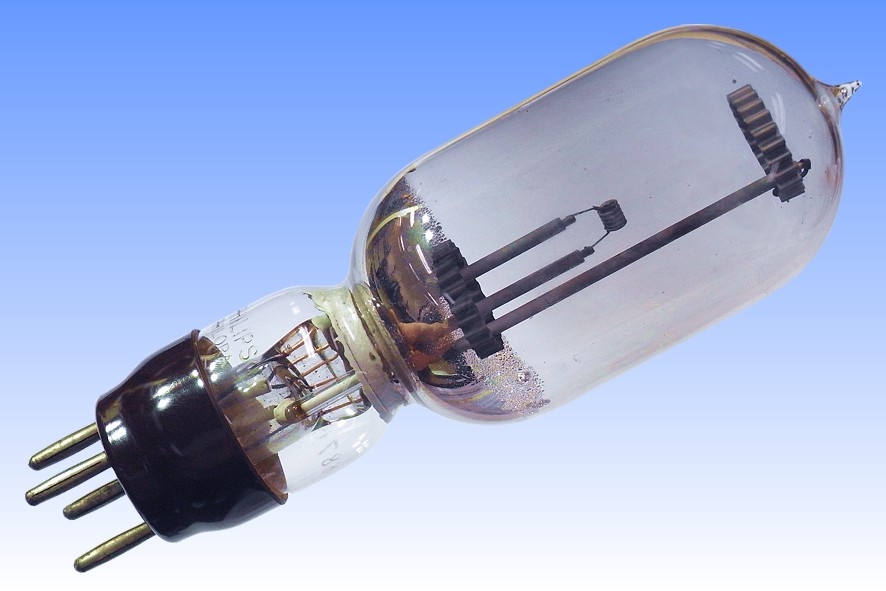
|
Philora 4000-lumen Direct Current Sodium Vapour |

A single cathode is mounted at the centre of the bulb and is coated with barium oxide for good electrode emission. The discharge is struck to a pair of ring-shaped molybdenum anodes each spaced a few centimetres above and below the cathode. The lamps are intended for operation on direct current and this ensures that the sodium ions are kept in the vicinity of the central cathode. In some installations the lamps were trialled on alternating current, with the discharge oscillating between the two anodes on each half-cycle but this proved unsuccessful. Sodium was more likely to diffuse towards the bulb ends where it attacked the seals, and due to the discharge length being essentially halved the current density increased, and compromised lamp efficacy.
A conventional flare and stem design is employed to seal the bulb. To prevent the condensation of sodium in the cool neck area and maintain a sufficiently high vapour pressure, this portion of the bulb is sealed off with a chrome-iron plate cemented into the neck. The disc is pierced by a small ceramic tube whose far end is partially capped with a glass tube, and this presents a sufficiently long and tortuous path that it is quite effective in preventing sodium diffusing into the lower void where it would otherwise attack the seals. The lamp is intended for operation within a dewar jacket to provide the necessary degree of thermal insulation, raising the temperature for optimum sodium vapour pressure.




| Manufacturer: | N.V. Philips Gloeilampenfabrieken | |
| Lamp Power: | c. 100 Watts (including filament heating) | |
| Lamp Current: | Arc 5.5 Amps | Filament 9.6 Amps |
| Lamp Voltage: | Arc 15 Volts | Filament 1.8 Volts |
| Cap Type: | 4-Pin Valve | Bakelite |
| Bulb Type: | T-63 mm | T-20 eighths/inch |
| Bulb Finish: | Clear | Borate Glazed Soda-lime |
| Electrodes: | Coiled-Coil tungsten | BaO emitter |
| Arc Length: | 2 x 20mm | 2 x 0.75 inches |
| Atmosphere: | Na 0.5 grams | Neon 1.5 torr |
| Luminous Flux: | c. 4,000lm | @ 100 hrs |
| Luminous Efficacy: | c. 40.0 lm/W | @ 100 hours |
| Colour Temperature & CRI: | CCT: 1700K | CRI: Ra -44 |
| Chromaticity Co-ordinates: | CCx: 0.574 | CCy: 0.425 |
| Rated Lifetime: | Approx 900h | to 50% survival |
| Warm-up & Re-strike time: | c. 15 minutes | Instantaneous |
| Burning Position: | Vertical ± 45° | |
| Overall Length: | 150mm | 6 inches |
| Light Centre Length: | 120mm | 4 inches |
| Factory: | Eindhoven | The Netherlands |
| Date of Manufacture: | c. 1932 | |
| Original / Present Value: | Unknown | |
